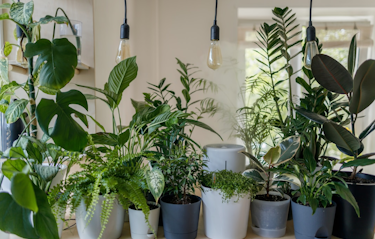
How To Trim Pothos
- Easy Care
- Araceae
- Large
- Evergreen Tropical Vines
We independently select everything we recommend. When you buy through our links, we may earn a commission.
Possible causes of brown tips on a snake plant include under-watering, over-watering, improper light conditions, inadequate humidity, and pest infestations. Although these succulents are considered easy to grow, it is important to offer the snake plant certain things to ensure optimal health and growth.
Published on 22 August, 2023 by Oliver Rouane-Williams
Snake plants, also called mother-in-law’s tongue, are considered very hardy houseplants that are easy to grow and excellent at purifying the air. But low-maintenance doesn’t equate to no-maintenance. Even these resilient beauties need a certain amount of attention to prevent conditions that cause brown spots on the leaf tips.
When a snake plant is not getting enough water, the tips of the leaves may turn brown. The leaves may start to curl, wrinkle, appear crispy, and droop. For very large snake plant leaves, drooping leaves often have to be cut off. Even with water, it may not be possible for the plant to upright its heavy leaves.
Put your snake plant on a consistent watering schedule. Snake plants need watering every 2-4 weeks depending on the indoor conditions. Often the recommendation is to water your plant once a month, on the same day each month. Unless that causes problems, assume that regular watering just once a month is a good option.
Learning how to water your snake plant is important. Signs that your snake plant is receiving excess water include dropping leaves, brown leaf tips, leaves turning yellow, mold, a musty smell, or root rot. The plant and soil can both feel mushy.
First, let the plant dry out completely before watering it again and adjust your watering schedule. If you don’t catch the problem right away, however, you may need to be more aggressive.
If you suspect root rot has set in, repotting is the only option to potentially save the plant. Carefully remove the plant from the pot it is in. Using clean gardening shears, snip away the damaged portion of the snake plant roots. The plant should be repotted in well-draining potting soil made for succulents in a pot with drainage holes.

Snake plants can live in a variety of lighting conditions, including low light. But they need some indirect light to thrive. A snake plant that isn’t getting enough sun can droop and lose some of its variegated coloring due to lack of chlorophyll. If left in a shady spot for too long, the plant will deteriorate and the leaf tips will turn brown.
Direct sunlight will scorch the leaves of a snake plant. Like other indoor plants, they usually do well with indirect light as far as six feet from a window that faces west or south.
Houseplants can be bothered by pests such as mealybugs and spider mites. The first sign of this common problem is curling leaves, followed by discolored leaves and brown tips as the bugs feast on the sap and drain the nutrients from the plant. You can sometimes see the pests upon closer examination.
There are different solutions to your pest problem depending on the type of infestation you are experiencing. First, it is important to move your plant away from any other plants in your home to prevent spreading the problem.
Neem oil or insecticidal soap are both ways to rid your plants of insects. White vinegar is a more natural approach. Some pests can be removed from the plant with water spraying, and then a gentle wiping with an alcohol wipe.
Snake plants are also susceptible to fungal diseases that can cause brown spots on the leaves. Fungal infections are usually caused by excess water, whether due to an inconsistent watering schedule, high humidity levels, or poor-draining soil.
The first and easiest solution is to reduce watering frequency. Use a moisture meter to check the soil between waterings. If it’s still too wet, repot the plant in a new pot with drainage holes with well-draining succulent potting mix.
If your plant is in the bathroom or kitchen, it may be getting too much humidity. These plants prefer dry air with 30-50% humidity, so you may need to move it to a new location.
After fixing the cause of the infection, you can use a neem oil-based fungicide spray to treat your plant and help it bounce back quicker.

Yes, you can trim off the brown part of a snake plant. Just be aware that the snake plant leaf will not regrow from where it was cut, so it’s best to cut the entire leaf from the base of the plant for aesthetic purposes.
If most of the leaf is healthy, save it for propagation. Snake plants are simple to propagate from leaf cuttings!
When caring for the snake plant, or sansevieria trifasciata, there are a few basic things to know first and foremost. They do not need a lot of water and many can be watered just once a month. Do not water your plant with tap water unless you leave it sitting out for at least 24 hours. Many plant owners water with rainwater that they collect or distilled light.
The snake plant does well in moderate or low light, as well as low humidity. Lastly, this houseplant does not require too much fertilizer.
Delivered to your inbox every Saturday morning








